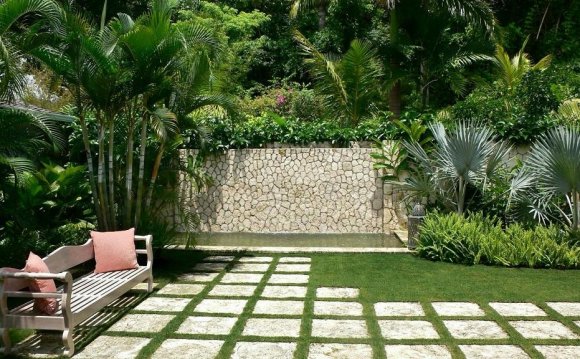
Philip Johnson and David Whitney acquired the land for the Glass House site over a fifty-year period. Johnson purchased the initial five-acre parcel in late 1945. By 1949, the core parcel featured the Glass House, Brick House, and the courtyard between the two structures. Johnson and Whitney expanded the property to 47 (currently 49) acres, creating a canvas for the 14 architectural structures that are a “diary” of Johnson’s architectural ideas.
The existing vernacular eighteenth and nineteenth century stone walls, barn foundations, and mature trees were used as the “organizing principle” of the site. Much of the property’s second growth forest was cleared to reveal views and shape vistas to feature follies, pavilions, and natural elements that Johnson referred to as “events on the landscape.”
Johnson’s landscape style is particularly American as it exhibits influences as diverse as the fields and pastures he knew from his Ohio childhood to the great seventeenth and eighteenth century European landscapes. He specifically noted as his influences Vaux-le-Vicomte, Les Buttes Chaumont, and the eighteenth century English gardens Stourhead and Stowe. Johnson often referred to himself as a landscape architect and when asked to compare architecture and landscape state, “to me, it’s one art.”
Walking tour with Philip Johnson, 1991
“The landscape becomes by far the most important thing in the mind of the architect and it will be for the visitor. The objects, the tools of this art, the – what are we dealing with? We’re dealing with, I mentioned before, bridges, water, things like that. So water had to be, had to be part of that. I don’t know why you have to have water. But it’s a basic feeling of mankind, something about the aquatic motion of water that’s amniotic maybe, but it is basic.
And the water I created by digging out the pond, the way any 18th century landscape architect would. And I even went so far as to put in the middle of the water a jet, which was splendid, but every time I pressed a button it was another $100 and I got awfully tired of it. But it was very pretty climbing out in the middle over the fountain.















